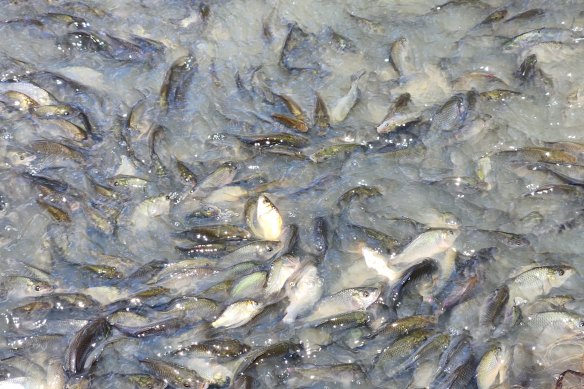
Widespread floods have caused an explosion of carp numbers along the Murray-Darling Basin, raising concerns among farmers and experts that native fish populations will decline.
For Riverina rice grower Jeremy Morton, a small levee on his property now houses thousands of carp, all swimming on top of each other. While they generally call the area home, their numbers have grown exponentially in the past three months – when floodwaters started working through the river system. While he says it’s common to see the pests following floods, he’s never seen this many.

Water on Jeremy Morton’s farm in the Riverina has now been overrun with carp.Credit:Jeremy Morton
“It looks like boiling, bubbling up and boiling, all on top of one another, hundreds of thousands of carp in a tiny spot,” said Morton, who is also the National Irrigators Council chairman.
Not only can the pests reduce water quality, cause damage to river banks, and contribute to algae blooms, they can also impact daily farm operations, such as blocking irrigation pumps. Carp thrive in floods, travelling to new floodplains and expanding their habitats. They also can withstand blackwater events – when a waterway is starved of oxygen – that wipe out native fish.
But carp are not the only invasive species that have boomed after years of heavy rainfall and floods. There have been reports of increased deer, feral pigs, brumbies and weeds following natural disasters, including the floods and the 2019-20 bushfires. Floods impact waterways, bringing a deluge of sediment and other runoff, but carps have a much higher tolerance for poor water quality.
Invasive Species Council acting conservation director Jack Gough said invasive species populations could boom following natural disaster events, like droughts, floods and fire.
“The reason for this is that these events can help them spread, and because they often breed in large numbers and lack predators, they can take over ecological niches while the native wildlife are under stress,” he said.
“That is why we need state and federal governments to proactively increase funding for frontline pest and weed officers and research into new control techniques. We know if governments want to ramp up investment in response to natural disasters, they can’t roll it out overnight.”









 Add Category
Add Category